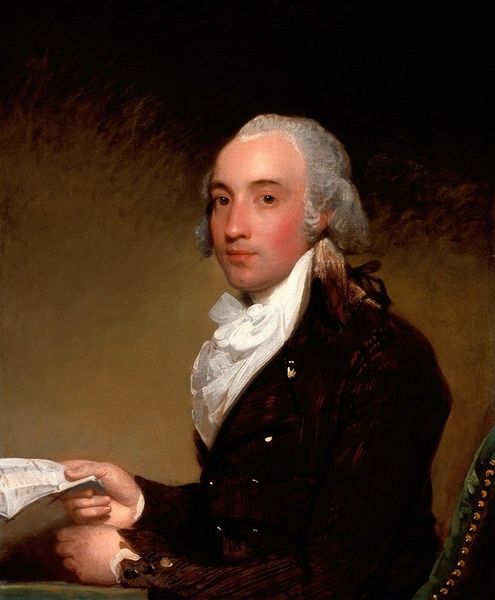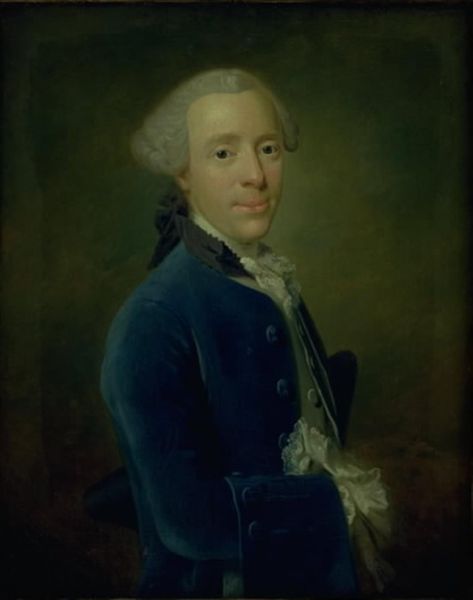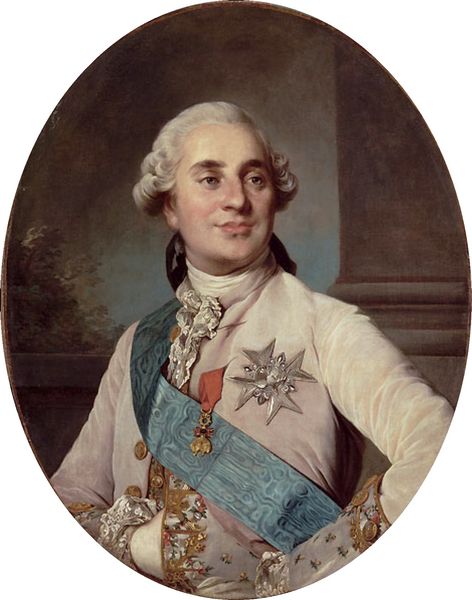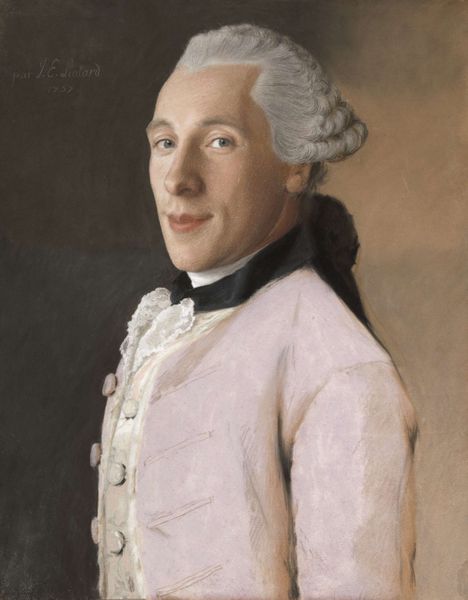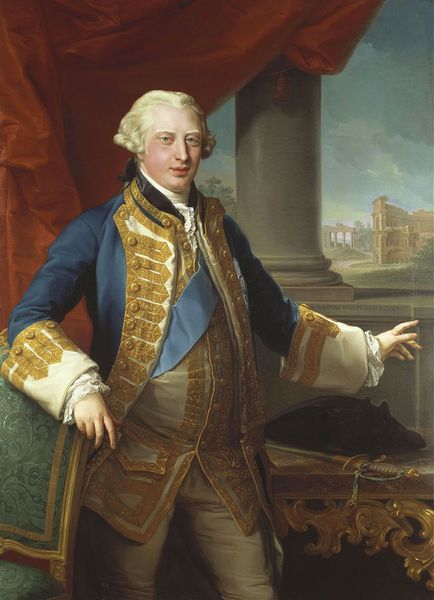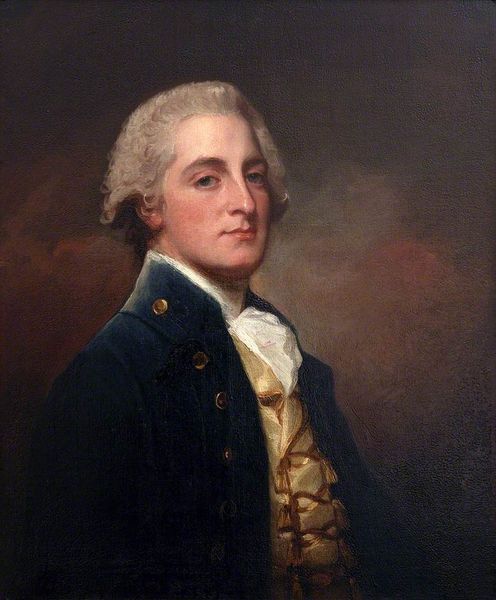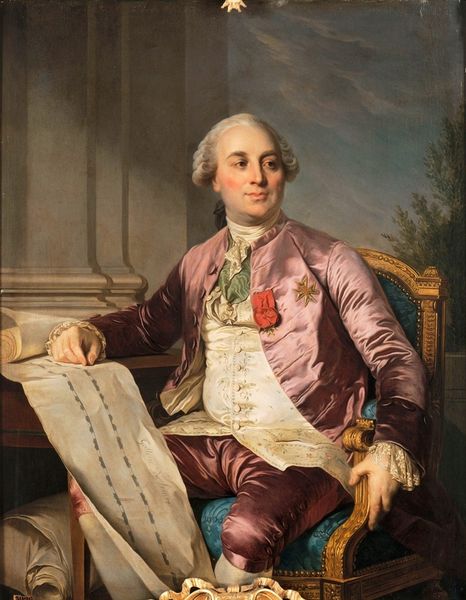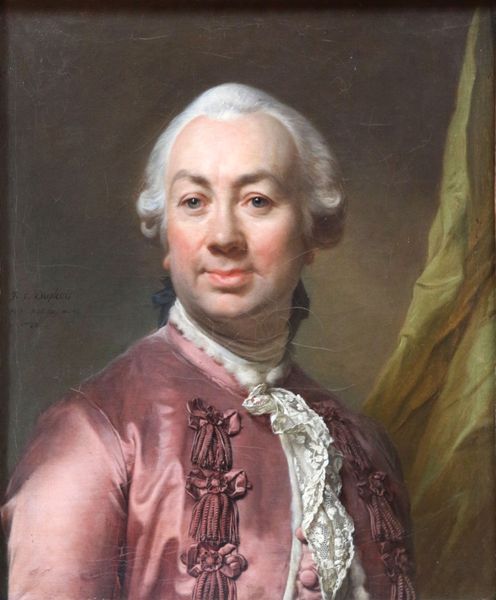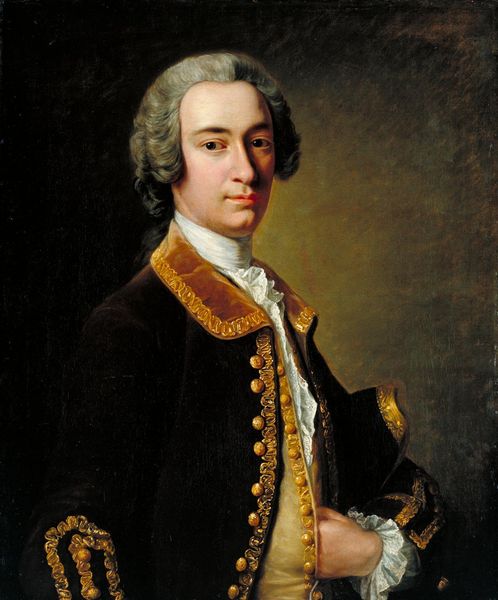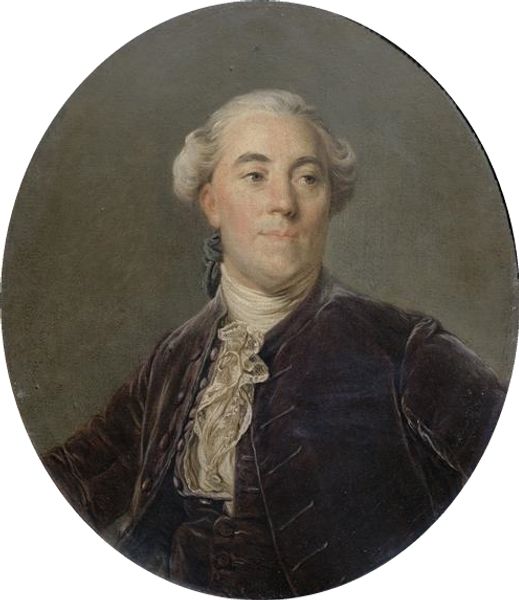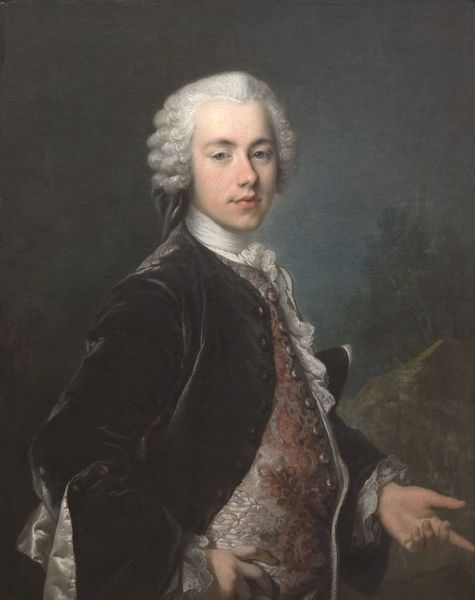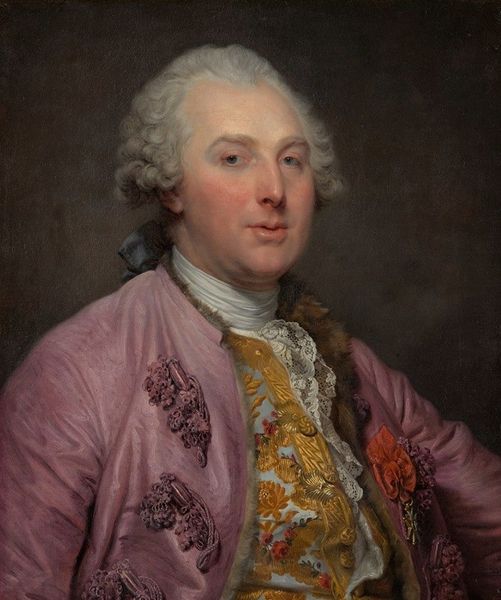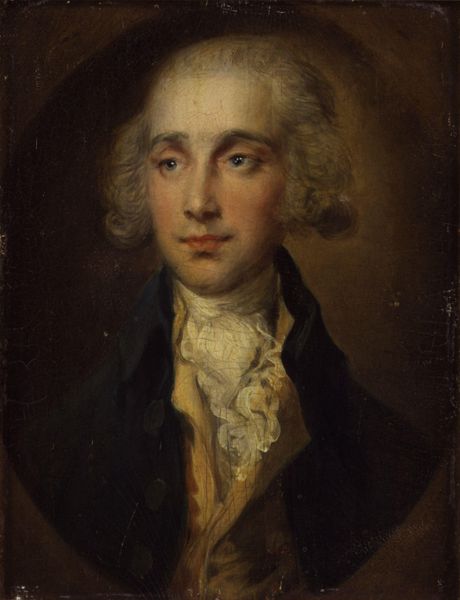
Copyright: Public domain
Editor: Here we have Joseph Duplessis's oil painting, "Louis XVI of France," created in 1775. The blue of his jacket really dominates. I'm struck by what seems like a disconnect between the regality of the clothing and… I don't know, the kind of hesitant expression. What stands out to you in this piece? Curator: The most striking aspect is indeed that very dissonance you observe. The color, the fleur-de-lis embroidery... these shout royalty. Yet, there’s a softness, almost vulnerability, in his face. It's a pre-Revolutionary portrait. Look at how the symbols of power—the clothes—attempt to project an image, while the face betrays a different story. Doesn't this disjunction foreshadow the turmoil to come? What do you think about how the artist tries to bridge this difference through posture and facial expression? Editor: I see what you mean. The softness could hint at the internal conflict, like a person burdened by expectations. I didn't catch the fleur-de-lis at first, but now that I see it, it gives the portrait another dimension, laden with the symbolism of French monarchy and divine right. Curator: Absolutely. It's fascinating to see how the symbols interact with, or even undermine, the intended message. Think about how later portraits of leaders leaned into projecting strength, masking vulnerability. This Duplessis portrait seems caught in between eras. What do you think viewers at the time would have made of it? Editor: It’s almost unsettling when you frame it like that, because maybe they saw more than was intended, something prescient. I’m much more aware now of how portraits can reveal just as much as they conceal about the individual, as well as the times in which they were created. Curator: Indeed. Visual symbols carry powerful, often contradictory, weight. Analyzing them deepens our understanding of not just the artwork, but the culture and individuals within it.
Comments
No comments
Be the first to comment and join the conversation on the ultimate creative platform.

